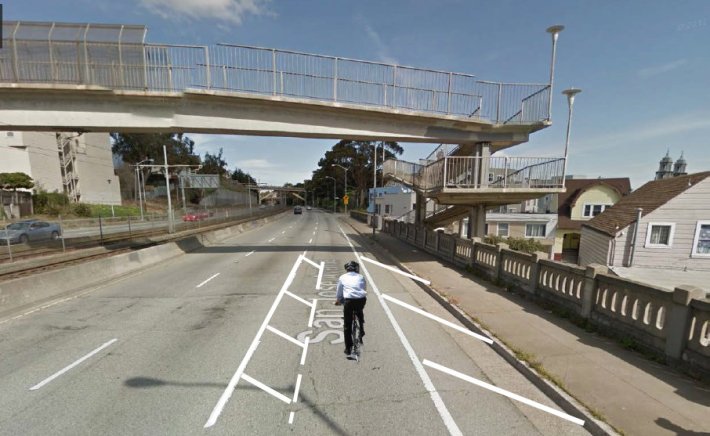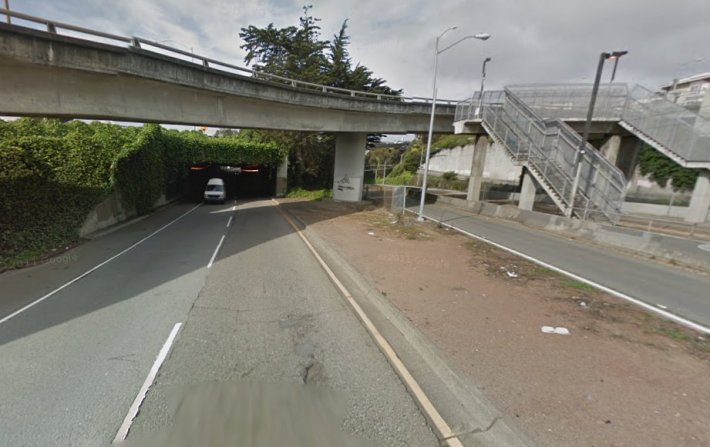Road Diet, Buffered Bike Lane Finally Coming to Northbound Bernal Cut
6:03 PM PST on February 4, 2014

A road diet and buffered bike lane are finally coming to San Jose Avenue north of 280, a.k.a. the Bernal Cut, where neighbors have fought for traffic calming for years.
The SFMTA and Caltrans are moving forward with a two-phased pilot project -- first, in March, the SFMTA will reallocate one of San Jose's three northbound traffic lanes to widen the existing bike lane with a buffer zone, much like the southbound side. If traffic speeds don't drop below the target, Caltrans will remove one of the two traffic lanes on the 280 off-ramp that the agency added in 1992 to accommodate re-routed traffic during freeway repairs after the Loma Prieta earthquake.
That second off-ramp lane was supposed to be temporary, but Caltrans never removed it. The agency was finally convinced by the SFMTA, Supervisor Scott Wiener, and neighborhood residents to test the lane's removal on the condition that it's a reversible pilot. (Caltrans has jurisdiction over the off-ramp, while SFMTA has jurisdiction over San Jose, which is a city street, as much as it might seem like a freeway.)
"There's been a fight with Caltrans for 20 years now to get it back to one lane," said Jon Winston of Friends of Monterey Boulevard, who has pushed for safer streets in the neighborhood.
"The speeds are incredibly high," said Wiener. "We have crazy stories of cars turning on to the side streets and flipping over... and I can't imagine why anyone would bike in a bike lane with no buffer and 50 mph traffic going past you."
San Jose has a speed limit of 45 mph, and 15 percent of drivers travel faster than 48 mph (the so-called "85th percentile" speed, which traffic engineers use to assess motorist behavior and street design), according to the SFMTA. On the off-ramp itself, the 85th percentile speed is 57 mph. The agency aims to bring those numbers down to 35 mph. The SFMTA will measure speeds after the San Jose road diet from March to August and complete an analysis in October. If the speeds aren't down to 35 mph, Caltrans will put the off-ramp road diet into effect soon after.
The project appears to have no significant neighborhood opposition, as residents have long called for slower speeds on the deadly Bernal Cut, which was dug out as part of the partially-built freeway network in the mid-20th century.
While this is a positive development, the project also breaks little new ground. As we noted, the off-ramp road diet would simply be a reversion to its pre-1992 configuration. And San Jose's northbound side would be redesigned to match the geometry of its southbound side, which was reduced to two lanes and had bike lanes added on both sides in 2005, thanks to years of advocacy from the San Jose Guerrero Coalition to Save Our Neighborhoods. (It's worth noting that a leader in that fight was Gillian Gillett, who became Supervisor Wiener's aide, and is now the mayor's transportation advisor. We weren't able to reach Gillett for comment today.)
Stay in touch
Sign up for our free newsletter




